11 Tips To Run As A Family & Motivate Your Kids To Exercise
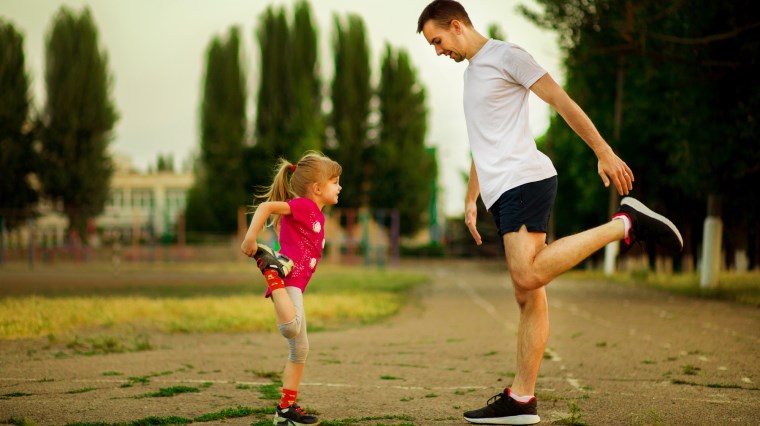
Running may be your #1 self-care ritual – your time-out from work and social stresses and to focus purely on yourself and the road.
Rather than running solo, why not run with your family? Especially in lockdown, running regularly with members of your household gives everyone a break from screen time, prevents the little ones from bouncing off the walls and builds strong, healthy relationships.
With your regular running group and team sports potentially put on hold, running with your kid(s) may be the motivation both you and they need to stay active during the pandemic and beyond.
These 11 top tips will ensure everyone from the youngest athlete of the family to parents training for their next marathon have a positive experience out on the road.
Have a pre-run routine
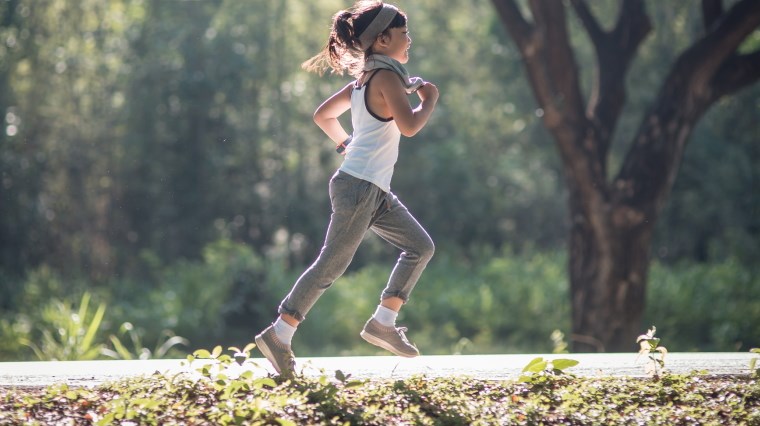
Structure can get little athletes excited and motivated to lace up. At first you may have to wrestle kids’ running shoes onto cheeky feet but with time this will act as a cue for your child to get ready and they’ll enjoy the routine.
Making a point to check that running shoes are laced up or strapped on snugly, that your water bottles are filled up and that your bodies are limber with dynamic or ‘active’ warm-up stretches will help your family physically and mentally prepare.
Dynamic stretches that are fun and easy for the kids include jumping jacks, arm circles, lunges, squats, leg swings and high knee lifts.
Be safe and seen
You may think your troop of growing athletes would be difficult to miss by other road users – particularly if you have a running pram, bikes and the furry member of the family in tow, however safety should always be your primary focus.
Getting your little athlete(s) familiar with road safety like how to stay aware of traffic, stay seen with visibility accessories and sun safety like slapping on a hat and sunscreen will help cement these skills for life.
Plus, it’s no secret that kids have a blast when wearing bright colours and glow-in-the-dark accessories.
Exercise as play and adventure
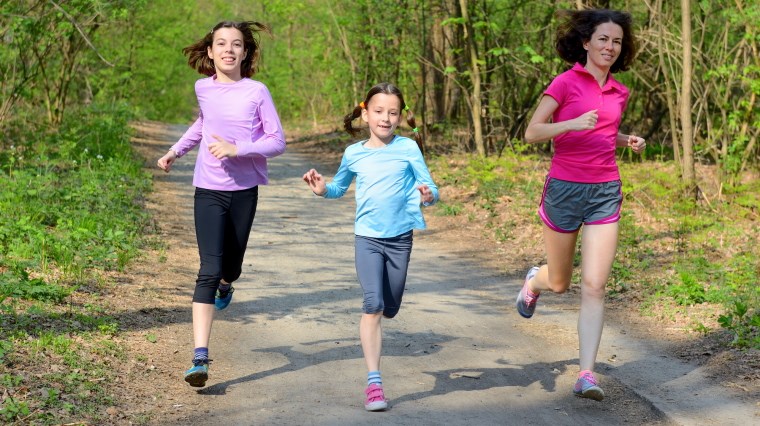
Alike with eating vegetables, exercise should not be presented as a chore but as play. The goal is to make running into a pressure-free and healthy habit, but it is OK to steer away from structure occasionally.
Get your kid(s) involved by allowing them to choose where to run (e.g. the local playground or a favourite picnic spot on a nature trail). Trading the road for nature hikes allows the whole family to rejuvenate and explore – reframing exercise as a fun adventure.
If your child prefers cycling to running, consider taking them to bike-friendly parks or trails. The method of exercise is less important than the fact that they are exercising - even if they don’t know it!
Exercise as competition
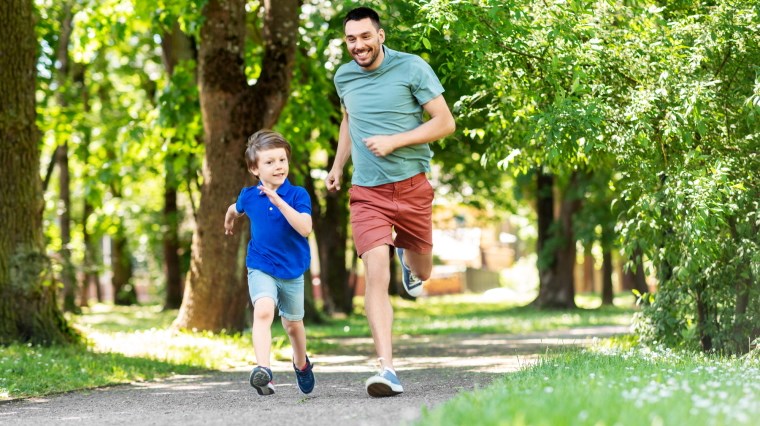
Although competition should be based on racing yourself and not others, an element of playful competition between family may help inspire your child or turn exercise into a game.
Younger kids may have a thrill racing you to the mailbox or at the park, whereas an older child may be keen to beat their previous distance, running a little further each time to fuel their own sense of reward and gratification as they discover their passion for moving.
Reward effort
Nothing beats having an ice cream outing with the family, but limit food-based rewards. As adults we know exercise is its own reward, but this can be an abstract concept for children. With time and education, your kid(s) can learn to connect physical exercise with its mood-boosting and health benefits.
Be sure to support and praise your children with positive feedback for genuine effort as they progress, not just long-term accomplishments or winning a race. The immediate gratification will help build the bond with your child, boost their confidence and motivate them during family runs.
Many children also benefit from a more tangible reward system tailored towards their interests and age like sticker charts or earning points for playing outdoors. Once they earn a certain number of stickers or points, these can be used to ‘buy’ a larger reward – and even better if that reward is something that encourages more activity like a family beach getaway or indoor rock-climbing.
Run, cycle or scooter as a group
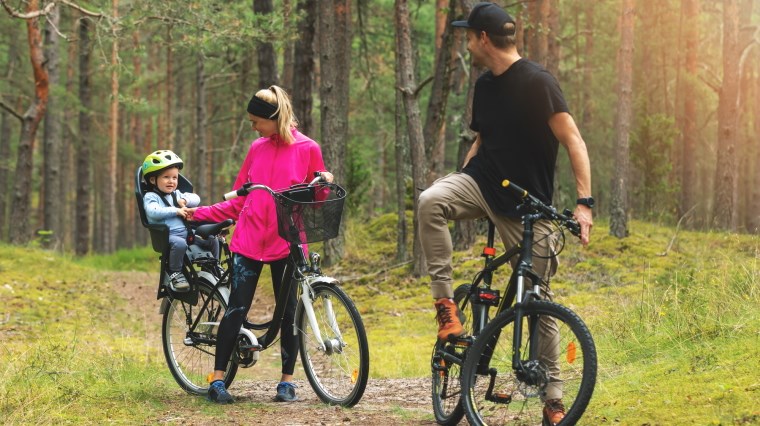
As each family member is likely to maintain a different pace by foot, it’s important to make sure no child feels disheartened or isolated if the older kids run ahead. You can rejig what it means to run as a family. You may be pushing a little one under 3 in a running pram at a steady walking pace with an older child cycling alongside or a teenager at a jogging pace.
Where there may be resistance against ‘running’ or ‘exercise’ itself, props like bikes and scooters are a great option to get young kids excited about heading outdoors and help boost their confidence.
Ensure they’ve had plenty of practice in a safe environment away from other pedestrians or traffic before riding on the footpath. Baby and child bike seats attached to your own bike are also an option to take younger children on your cycling adventures.
Extended family members like grandparents and cousins can even join in by using fitness apps with a step count challenge function to motivate both the kids and grown-ups and stay connected even at a distance.
Prepare for rest breaks
Depending on the length of the walk or run, intermittent rest breaks can be beneficial and destinations like a playground or sports oval can be the perfect spot for the whole family to recover.
Although it’s important to encourage toddlers to walk to strengthen their bones and promote heart health, they don’t have the stamina to maintain exercise for as long as other members of the family and may tire during activity.
It may be enough to pack healthy snacks for a toddler to sit down and munch on, do a couple of jumping jacks to re-energise and carry on. Alternatively, a running pram can be great option for young children to ‘keep up’ with their siblings without having to wrap up family exercise early.
Cool down & stretch for recovery
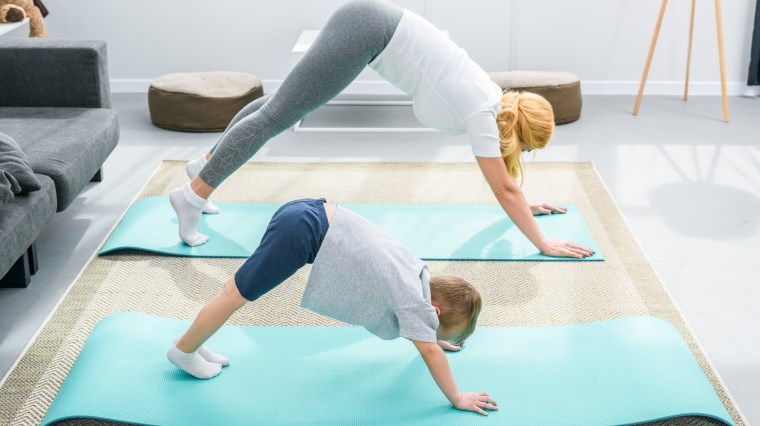
After exercise, it’s important to encourage your kid(s) to do static stretches – that is, low intensity stretches that involve holding a position for a duration of time (about 15 – 60 seconds).
You can get the whole family involved in kid-friendly rejuvenating yoga poses like downward dog, child’s pose and cat-cow pose to lengthen muscle fibres, increase flexibility, release tension and promote relaxation.
Kids should be able to feel the stretch without it causing discomfort or pain.
Plan for future Fun Runs
Many Fun Run events are pram and child-friendly – giving the opportunity for all members of the family to be involved. Although some kids may thrive on competition, keep the focus on having a light, enjoyable time. Many Fun Runs have a theme like obstacle courses, beach-to-beach and getting covered head-to-toe in colour to really engage and stimulate athletes of all ages.
You may be training for a competitive racing event like a marathon. Having another family member bring the kids along to cheer and support you on race day can help inspire their passion for running as they get caught up in the excitement of their super-mum or super-dad crossing the finish line.
Don’t forget to run for you

As a parent, it's important to let go of the guilt associated with scheduling time away from the kids for your self-care. For runners, recharging with an invigorating solo run may be exactly what you need to feel refreshed and stay ready to chase your little ones.
When juggling the kids during family runs, setting a personal best is not on the cards. If you’re keen to run at a snappier pace or to fit in marathon training, you can treat the family run as a warm-up or recovery run and get to the ‘real work’ to when you’re training solo.
Be flexible with your solo running workouts to make them fit around your schedule – you may have to cut your training into shorter sessions to suit when you have a babysitter or other family member available to watch the kids.
Your solo runs are where you can focus on improving your speed, distance and work towards your running goals. Of course, you shouldn’t compare your running performance between your family runs and solo runs. Let family runs be just that.
Teach your kids about food for fuel

Family exercise is an excellent way to start teaching your kid(s) the connection between food (your body’s fuel) and exercise. Teaching kids that eating a 'colourful’, nutritious diet provides energy for fun and exercise can help children develop positive relationships with food and create healthy eating habits for the future.
Leading (or eating) by example, planting a veggie patch as a family and getting your kid(s) involved in cooking a post-run meal can help build these positive connections and set the foundations for a healthy adulthood.
Happy running!
